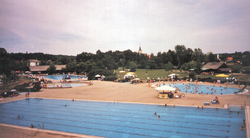
Sisak is a city in central Croatia, spanning the confluence of the Kupa, Sava and Odra rivers, 57 km (35 mi) southeast of the Croatian capital Zagreb, and is usually considered to be where the Posavina begins, with an elevation of 99 m. The city's total population in 2021 was 40,185 of which 27,886 live in the urban settlement (naselje).

Sisak-Moslavina County is a Croatian county in eastern Central Croatia and southwestern Slavonia. It is named after the city of Sisak and the region Moslavina just across the river Sava. According to 2021 census it is inhabited by 141,000 people.

Stari Jankovci is a village and a municipality in Vukovar-Syrmia County, Croatia

Hrvatska Kostajnica, often just Kostajnica, is a small town in central Croatia. It is located on the Una river in the Sisak-Moslavina County, south of Petrinja and Sisak and across the river from Kostajnica in Bosnia and Herzegovina. In the past, Hrvatska Kostajnica was called by different names, Koztainicha, Kaztanicha to Costgnanica. The name most likely comes from the word Kostanj (chestnut).

Novska is a town in the Sisak-Moslavina County of Croatia. It is located in western part of the historic region of Slavonia, between Kutina and Nova Gradiška, 94 km (58 mi) linear distance southeast of the capital, Zagreb.

Plitvička Jezera is a municipality (općina) in central Croatia, in the eastern part of the Lika-Senj county, that lies in and near the eponymous Plitvice Lakes National Park, bisected by the D1 main road (Zagreb–Split). Its total area is 539.08 km2 The main town and seat of the municipality is Korenica. Smaller towns and villages are Bjelopolje, Jezerce, and Ličko Petrovo Selo.
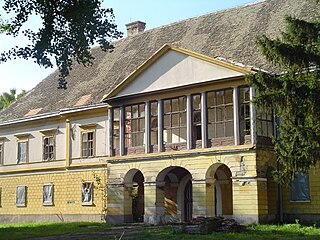
Darda is a village and a municipality just north of Osijek, Croatia. It is located across the Drava river in Baranja. The population of the village is 5,323, with a total of 6,908 people in the municipality. The castle of the Hungarian Esterhazi family is located in the center of the Darda.
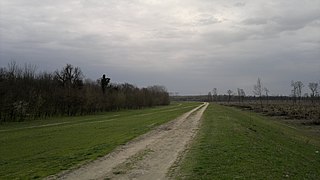
Jagodnjak is a village and a municipality in the Osijek-Baranja County, Croatia. Landscape of the Jagodnjak Municipality is marked by the Drava river with surrounding wetland forest and by Pannonian Basin plains with agricultural fields of corn, wheat, common sunflower and sugar beet.

Bogdanovci is a village and municipality in the Vukovar-Syrmia County in eastern Croatia. It is located a few kilometers south of Vukovar in eastern Slavonia. Bogdanovci is underdeveloped municipality which is statistically classified as the First Category Area of Special State Concern by the Government of Croatia.
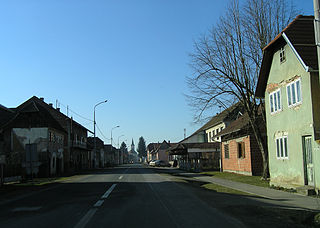
Hrvatska Dubica is a village and a municipality in central Croatia in the Sisak-Moslavina County. It is located on the northern bank of the river Una, east of Hrvatska Kostajnica and southwest of Jasenovac and Novska. The town of Kozarska Dubica lies to the south of the municipality, in Bosnia and Herzegovina. Hrvatska Dubica is underdeveloped municipality which is statistically classified as the First Category Area of Special State Concern by the Government of Croatia.

Donji Kukuruzari is a village and a municipality in Croatia in the Sisak-Moslavina County. Donji Kukuruzari is underdeveloped municipality which is statistically classified as the First Category Area of Special State Concern by the Government of Croatia.
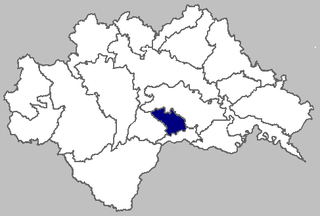
Majur is a settlement and a municipality in central Croatia in the Sisak-Moslavina County. It has a population of 1,185, 70.04% of whom are Croats and 27.26% are ethnic Serbs.
Popovača is a town in Croatia in the Moslavina geographical region. Administratively it is part of the Sisak-Moslavina County.

Sunja is a municipality in Croatia in the Sisak-Moslavina County.
Dragalić is a municipality in Brod-Posavina County, Croatia. It is around 7 km west of Nova Gradiška.
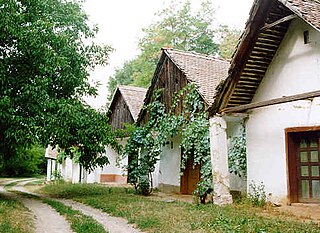
Draž is a village and municipality in Osijek-Baranja County, Croatia. There are 2,767 inhabitants in the municipality.
Podravska Moslavina is a village and a municipality in Osijek-Baranja County, Croatia. There are 1,202 inhabitants in the municipality.
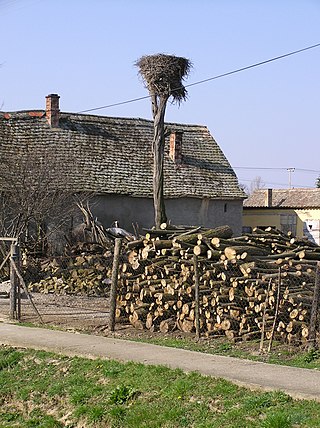
Popovac is a village and municipality in Osijek-Baranja County, Croatia. There are 2,084 inhabitants in the municipality. Popovac is underdeveloped municipality which is statistically classified as the First Category Area of Special State Concern by the Government of Croatia.
Staro Selo is a Slavic toponym meaning "old village" and may refer to the following villages:
Staro Selo Topusko is a village in central Croatia, in the municipality of Topusko, Sisak-Moslavina County.
